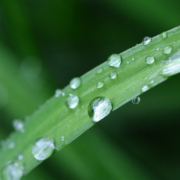After a dry spell, the first rainfall is the most important water to capture for your landscape. This is called the “first flush.”
In arid regions like San Diego County, this happens every year because there is a long stretch of dry weather in between rainy seasons.
Why is the first rainfall so important?
It washes away pollutants that have collected since the last rain. This water needs to be filtered as much as possible by landscaping before it goes anywhere else. Usually the next stop for this water is storm drains that empty into oceans. So your landscape can be a very important tool in preventing the buildup of pollutants in local water supplies.
In addition, the first rain in the fall is very important for your plants. New or established plants will want to grow deep roots in the fall and winter, and the additional water is essential. Capturing the rain with your landscape reduces the need for increasing irrigation.
How much water comes off your roof?
Measure the size of your roof to determine how much water will come off it. The shape of your roof doesn’t matter in this instance. The same amount of water falls on the roof whether it is sloped or flat. You can measure a sloped roof either using an aerial view or from the ground without worrying about the slope itself. Just measure the outside edges the same way you would if it was flat and calculate the square footage.
Flat roofs covering a building in one contiguous shape are easier to measure. Some roofs are more complicated. You can divide this type of roof into individual squares or triangles. Then, measure each one at a time and add the figures together for your total roof area.
Calculate your potential water capture
Once you know the total roof area, you can determine the amount of rainfall it generates in gallons, then use the following formula to convert square feet to gallons.
Formula: Rainfall in Inches x Total Square Feet x 0.62 = Gallons of Rainwater from the Roof
Here’s an example using a 1,000 square foot roof: 1 inch of rain x 1000 x 0.62 = 620 gallons.
Even in a dry climate, this rainfall adds up to a lot of water runoff. It’s easy to see how important it is to save as much of this water as possible in a landscape designed to be a sponge instead of a brick. Take the watershed approach to designing your landscape, and you can use the first flush of rain to your advantage.
The San Diego County Water Authority and its partners also offer other resources for landscaping upgrades, including free WaterSmart classes at WaterSmartSD.org.





